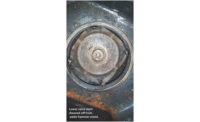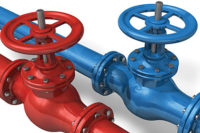Valves are used extensively in different industries for flow control. These devices are also essential for enhancing the safety of fluid processes — they protect people, equipment, and the environment. Valves are designed for use in different facilities, with different sectors prescribing the minimum performance and safety standards. Valves must maintain the highest safety standards throughout their useful lives.
The safety of industrial valves depends on several factors. Their design determines flow coefficients, sealing efficiency, fail-safe capability, and compatibility with the service media. When valves used for chemical fluid service leak, they emit hazardous fluids into the environment. They harm process operators and may release ozone-depleting gases into the atmosphere.
Another way to guarantee the safety of industrial valves is by installing and handling them as intended. A valve designed for potable water supply should not find its way into a chemical-processing pipeline. Similarly, the valve should be subjected to recommended flow conditions. Exceeding the valve's ratings can impact the strength of internal valve components and may lead to premature damage — resulting in serious safety incidents.
The HVAC sector depends on different valves designed to mitigate emissions, enhance system efficiency, and limit human error where manual operation is needed. The industry operates in a closely monitored environment, and process engineers and designers must ensure strict compliance with relevant industry regulations and standards.
What factors should design engineers, maintenance personnel, and process operators consider when selecting, installing, and maintaining valves? How can they improve the safety of valves in different facilities?
Automate Valve Operation
Industrial valves are either manually operated or automated, depending on several factors like the criticality of the fluid application, frequency of valve actuation, and the actuation force required. Placing the human operator at the center of valve operations can result in a few safety concerns. The human operator makes errors that impact fluid flow and increases operational risks. Manual valve operation can also expose human operators to health risks like soft tissue injuries due to frequent turning and repetitive strain.
Automating valve operation can minimize safety errors and improve the consistency and quality of fluid flow operations. Automation is made possible using actuators that deliver sufficient valve operation forces. They have better response capabilities and can perform repetitive tasks more consistently. Companies leverage automation to complete fluid flow control in hazardous and hard-to-access locations.
Automating valves allows process operators to monitor valve performance remotely and identify underlying maintenance issues based on real-time data. Monitoring real-time valve performances enables companies to establish robust maintenance strategies.
Where valve automation is untenable, companies should select valves with sufficient safety mechanisms. These mechanisms prevent backflow and protect operators in case the valves fail in action. They include mechanical interlocks to allow the sequential shutdown of processes, spring returns, and fusible links that ensure the valves attain a fail-safe state.
Conduct Regular Valve Maintenance and Testing
Valves contain several mechanical components that fail due to fatigue, media corrosion, and thermal stress. These valves require regular inspection and maintenance to ensure optimal performance. Facilities should establish suitable maintenance strategies to ensure every valve is inspected and maintained to avert failures.
Valve testing follows diverse industry standards, like API 598, and uses advanced materials inspection tools, like ultrasonic flaw detectors. Maintenance technicians conduct a visual inspection to check for cracks, surface wear, or signs of leakage on the surface. In some cases, they unmount valves to check seals and inspect the tolerances of closure mechanisms. For instance, the maintenance of an industrial ball valve will include cleaning the bore and evaluating ball thickness.
Facilities should audit valves at predetermined intervals. Facilities rely on these audits to quantify valve usability and assign risk levels to each valve. Valves that exhibit lower usability — and are considered to be high-risk — should be replaced. Every facility allocates risk scores depending on the type of service fluids, age of valves, and level of compliance with industry standards.
Popular valve maintenance interventions include:
- Replacing worn-out seals;
- Verifying torque on flange fasteners;
- Cleaning valve bodies;
- Adjusting stem packings;
- Replacing worn-out valves;
- Inspecting valve actuators and auxiliary devices; and
- Exercising hand levers and lubricating valves.
Ensure Proper Handling and Transportation of Valves
Some valve safety issues arise due to poor handling and transportation of valves. Poor valve handling means the facility may end up installing a faulty device. Personnel involved in the installation and maintenance of valves should use appropriate work tools and leverage best practices to avoid damaging internal and external components. Dropping valves on hard surfaces can tamper with the shell or distort internal components. It can cause misalignment of valve closure mechanisms and the seal. That leads to leakage of service media and may increase the fire safety risks if the fluid is flammable.
Some best practices when handling valves to maximize safety include:
- Transport valves in an upright position;
- Lift valves using provided eyebolts (for heavy valves);
- Keep the valves sealed when transporting them; and
- Use recommended torque to tighten valves.
Facilities should establish standard operating procedures for maintaining and replacing valves to guarantee consistency among maintenance technicians. It includes appropriate lock-out tag-out procedures to protect other valves in the system.
Technicians should be cautious when handling actuated valves. They should avoid carrying valves by the actuator neck. It increases the probability of actuator damage, which may lead to fugitive emissions when the valve is in service.
Adhere to Recommended Valve Operating Limits
Facilities can improve valve safety by adhering to the recommended operating standards. Each valve has an allowable flow rate, pressure, and temperature limit beyond which it fails. Each valve is designed to control fluids bearing specific chemical and physical properties.
Subjecting industrial valves to excessive fluid pressure and temperature increases the risk of shell rupture. These risks increase if the valve in question has logged significant service time. High flow rates beyond the designed capacity increase the corrosion of internal surfaces. Corrosion rates increase if service fluids are viscous.
Process operators should continuously monitor flow conditions to avoid straining valves. Design engineers should ensure valves are well-sized and equipped with the necessary safety measures to combat the likely escalation of process conditions.
Train Plant Operators and Maintenance Technicians
Finally, facilities can improve the safety of valves by training plant operators and maintenance technicians on best process practices. These employees require regular training to enhance their safety awareness and technical skills to identify safety risks associated with valve operations.
Maintenance technicians should understand how to correct valve failures. Training should cover suitable shutdown procedures, corrective interventions, documenting valve failures, and ways to streamline routine inspections. Technicians should understand how to leverage digital tools for remote valve inspection.
Plant operators should also receive basic training for troubleshooting valves and implementing preventive measures, like valve cleaning and greasing, to enhance efficiency and minimize safety risks.
Final Words
Improving the safety of industrial valves in facilities requires establishing and sustaining best practices and policies in adherence to industry standards. Valve failures cause financial losses and health risks and can severely damage equipment and the environment. Valve manufacturers aim to minimize safety issues by designing robust industrial valves. Facilities should support manufacturers by adhering to recommended operating standards and ensuring timely and precise valve maintenance. Facilities should conduct regular audits to identify aging valves and invest in automated and advanced maintenance and remote monitoring technologies to enhance performance, safety, and process viability.





